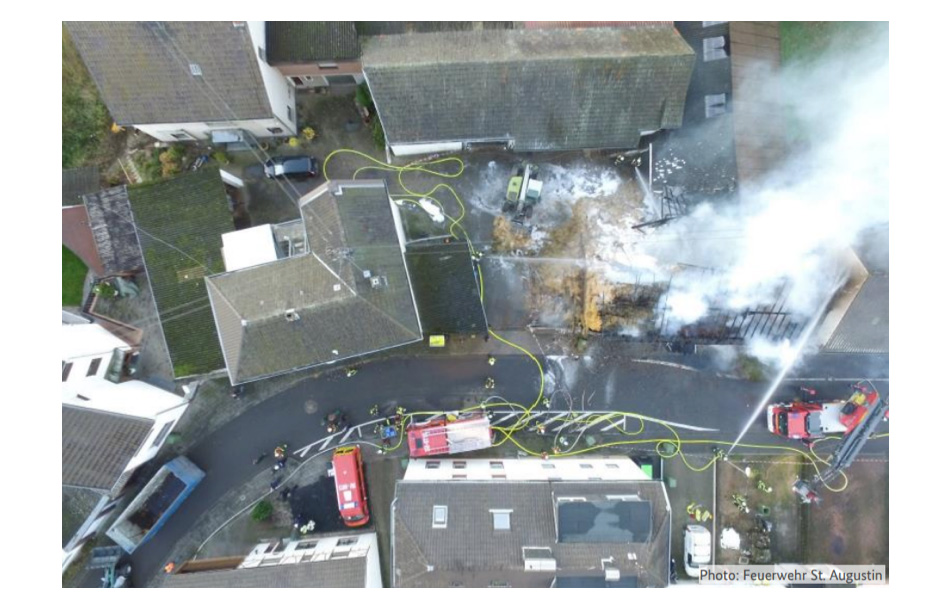Drones, rail and 5G technologies: how the 1900 MHz band is evolving
Robin Donoghue, ECO Expert in Spectrum Management, explores the recent developments in the 1900 MHz band. The band, he says, holds a significant promise for digital European cordless 5G technologies, governmental drones and enhanced railway communications
For almost 30 years the frequency band 1880-1900 MHz has been designated for digital European cordless telecommunications (DECT). DECT equipment has traditionally been best known for the cordless domestic handsets connected to the landline network. As far back as 1998, an Electronic Communications Committee decision, ERC/DEC/(98)22, has set out the harmonised technical use of the spectrum and exemption from individual licensing and free circulation of DECT equipment.
However, the DECT standard is evolving with DECT New Radio +, a 5G data transmission protocol, bringing the benefits of 5G technology.
Alongside those DECT developments, there are now other innovations being introduced aimed at using the 1900 MHz spectrum. Two such innovative uses are the governmental use of uncrewed aircraft systems (UAS), more commonly known as drones, and use by the rail industry for railway mobile radio (RMR). The rail use is an enhancement to the RMR 900 MHz core band.
The ECC has carefully studied these innovations to minimise interference to either the DECT systems or to these new radio services. In allowing the new innovations in the 1900 MHz sub-bands, it is essential to ensure there is no undue harm caused to or from the radio serviced immediately adjacent to the DECT 1880-1900 MHz frequency bands.
The ECO Report 03, developed from information uploaded to the ECO Frequency Information System (EFIS) database, reports that the 1805-1880 MHz band is licensed to mobile network operators in almost all CEPT administrations. In addition, the 1900-1920 MHz band is licensed to mobile network operators in approximately half of all CEPT administrations. Therefore, due protection of the commercial mobile networks has had to be ensured.
Developments for the governmental use of drones
In 2018, the Working Group Frequency Management (WG FM) initiated the development of an ECC report on spectrum solutions for UAS. This was initially intended to cover both, "the commercial use of command and control systems in the 1900-1920 MHz band" and "the governmental use of command and control as well as payload systems by UAS in the 1880-1900 MHz and 1900-1920 MHz bands".
However, as there were insufficient contributions brought on commercial drones, in October 2020 it was decided to focus on governmental uses. Those governmental uses could include the enhancement of public safety by police forces at large public events or use by public authorities in gaining easier and cheaper access to public infrastructure for inspection.
Figure 1 - UAS used in the coordination of fire fighting
Key to setting the sharing mechanism for 1900 MHz UAS was to ensure due protection both of existing DECT and to ensure the drones could coexist with any 1900 MHz RMR use. It was determined that co-channel operation between governmental drones and RMR in the 1900-1910 MHz band at the same location was not feasible, irrespective of the technology used.
However, where the DECT New Radio + technology was assumed, it was found that UAS could potentially be used in both the 1880 to 1900 MHz and 1910 to 1920 MHz bands. Conditions had to be attached first: Certain technical constraints on power, transmit power control and distance from any RMR infrastructure had to be mandated. Furthermore, the number of drones operated in any location would need to be limited to three. On this basis, the WG FM in June 2023 published a new ECC Report 352.
Work continues on an ECC Recommendation, based on the ECC Report 352. This work was started in early 2023 and is expected to be complete by the summer of 2024. Early proposals include a form of virtual geo-fencing around 1900 MHz RMR infrastructure. If this proposal is adopted, it would see RMR infrastructure managers providing detailed locations of 1900 MHz rail infrastructure into a secure database, which the governmental drone user would access to correctly observe the necessary distance between the rail infrastructure and the drone.
Developments for enhanced rail communications
In our Newsletter of August 2019, we set out the initiatives that are moving rail safety communication away from the legacy 2G-based system to a modern communication system based on newer technologies such as long-term evolution, 4G, or new radio, 5G. At the end of that article, we noted work had commenced on the 1900-1920 MHz band, following a Mandate to CEPT from the European Commission.
That work resulted in the CEPT Report 076 and ECC Decision (20)02 which designated the unpaired frequency band 1900-1910 MHz for RMR on a non-exclusive basis.
It is expected that the paired frequency bands 874.4-880.0 MHz and 919.4-925.0 MHz, known as the 900 MHz bands, will be the primary bands used for RMR communications. However, there are areas where there may be a need for additional channels to be in use, such as in large rail shunting yards.
Some of these shunting yards are at the border of European countries. Therefore, it has now been necessary to consider the issue of cross-border coordination, to minimise the potential for interference between 1900-1910 MHz RMR networks on either side of a country border.
Figure 2 -Rail shunting yard at a three-way border
In the ideal situation, adjacent country RMR networks would be fully synchronised. However, that is not always possible. Therefore, the WG FM, in June 2023, published a new ECC Recommendation (23)01 on cross-border coordination for railway mobile radio in the 1900-1910 MHz TDD frequency band. This was in turn based on the analysis detailed in the ECC Report 353, also published in June 2023. This new ECC Recommendation can now be used by rail infrastructure managers to set bilateral or multilateral agreements for cross-border coordination between RMR networks. These agreements will be based on a mutually agreed received power level, known as the "coordination trigger field strength".





